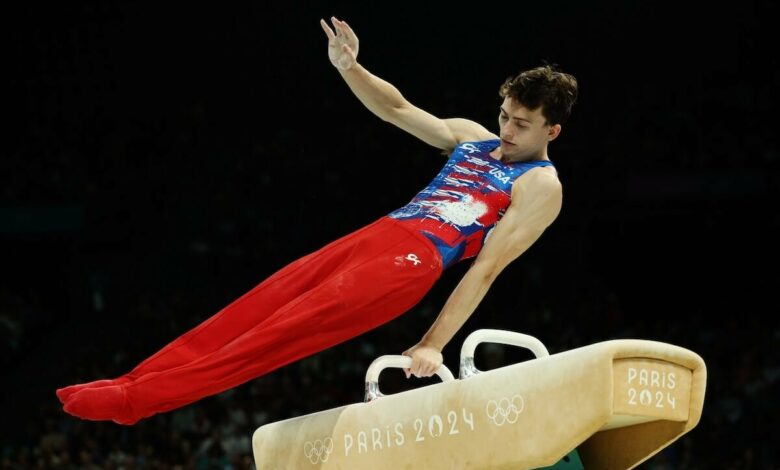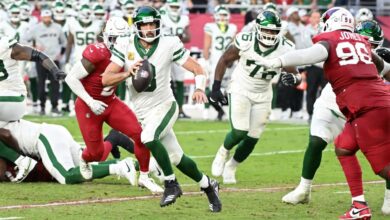US wins bronze in men’s gymnastics thanks to Nedoroscik’s stellar performance

PARIS — Saturday morning, after Stephen Nedoroscik completed his pommel horse routine, Paul Juda pointed to Nedoroscik’s forearm: “You’re going to get goose bumps,” he said. After the men’s gymnastics team final, Nedoroscik gave them to everyone.
The pommel horse specialist was brought to Paris to perfect one routine, one routine alone, and did so in the most dramatic fashion of the Olympics. The last man for the U.S., Nedoroscik had to wait the entire competition — more than two hours — before he could walk to the pommel horse. As China, the leader after five rotations, fell repeatedly on the high bar, Nedoroscik stepped forward to give the U.S. not only a shot at a medal, but perhaps a path to silver.
Finishing his routine with only a slight break in form, Nedoroscik pumped his arms as the crowd erupted in chants of USA, waving flags around the Bercy Arena. As he walked away, his teammates lifted him up as if he had just won a team medal.
Stephen Nedoroscik had to make a big move on the horse for Team USA in the final rotation…
AND HE DID. 🤯
📺: NBC and Peacock photo.twitter.com/hkhiHpovyh
— NBC Olympics & Paralympics (@NBCOlympics) July 29, 2024
With their arms around each other’s shoulders, Team USA first checked the scoreboard for Nedoroscik’s score — a 14.866 — then waited for the last competitor, China’s Zhang Boheng, to complete his routine on the high bar.
While Boheng did enough to help China move back to silver behind Japan, the U.S. still got what it came for — its first team medal in 16 years. Their celebration was just as jubilant as the gold medalists, and rightfully so.
Make no mistake. Nedoroscik didn’t do this on his own. He was merely the exclamation point to finish a story the U.S. has been building for four years. Stunned by a fifth-place finish in Tokyo, USA Gymnastics coaches made a conscious effort to change their approach. Realizing that their routines weren’t up to the level of difficulty they needed—they entered Tokyo a solid six points behind the top level of competition—they made a concerted effort to demand more from their gymnasts.
Of course, it’s one thing to create more difficult routines; it’s another to execute them. At the main meet, Team USA pulled it off. Except for a few minor jumps and form breaks, the men essentially nailed all 18 of their routines. Only one set — Paul Juda’s high bar — scored under 14 points.

GO DEEPER
How Is Olympic Gymnastics Scoring Determined? A Guide to Understanding the Competition
The U.S. was a model of consistency, steadily growing throughout the competition and relying on different gymnasts at every turn. Asher Hong jumped once on his very difficult vault, helping the U.S. move from fifth to first in the standings after two rotations; Frederick Richards planted his feet like glue on the final tumbling pass of his floor routine to keep them in the race. Judah followed up what he called the competition of his life with an even more solid night here, and Nedoroscik did what he was there to do.
Perhaps no one deserved the medal hanging around his neck more than Brody Malone. A little over a year ago, he suffered a catastrophic leg injury. Doctors feared he would be unable to walk, let alone compete, and he continued to wear an awkward brace for vault and floor exercises right up until the start of the Olympic Trials. The only returning Olympian on this list, Malone struggled in qualifying, failing to advance to the all-around or individual event finals.
When push came to shove, Malone came through. The stoic on a team of fist-bumping, high-fiving hype men, he stepped out for what could be the last routine of his life, atop the same pommel horse he had somberly begun Saturday. He performed his routine calmly and methodically, then dismounted and showed what was before him, a flood of emotion. Malone gave himself a Hulk bow before joining his teammates for a bear hug.
Required reading
(Photo: Jamie Squire/Getty Images)




